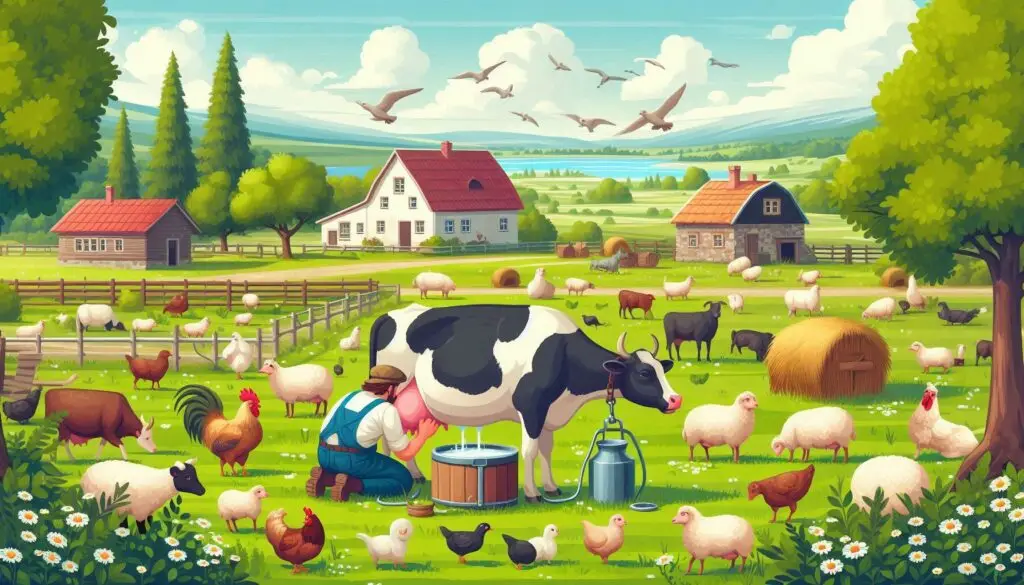Foot-and-Mouth Disease Vaccination in India

Introduction
In India, livestock farming plays a critical role in the agricultural economy. However, diseases such as Foot-and-Mouth Disease (FMD) pose significant threats to the health of animals and productivity on farms. FMD is a highly contagious viral disease that affects cattle, sheep, pigs, and other cloven-hoofed animals, leading to severe economic consequences.
Vaccination against FMD is essential to prevent outbreaks and protect the livelihood of farmers. India has made remarkable progress in implementing vaccination programs, but continuous efforts are needed to sustain and improve these initiatives. In this article, we will explore the significance of FMD vaccination in India and how it contributes to better animal health and agricultural productivity.
The Impact of Foot-and-Mouth Disease on Livestock
FMD spreads quickly among livestock through infected saliva, nasal discharge, and contaminated feed or equipment. The disease primarily affects cattle, pigs, and sheep but can also infect other farm animals, causing high morbidity and lower mortality rates.
Symptoms of FMD
- Fever
- Blisters in the mouth and on the hooves
- Significant decline in productivity
For more details on FMD and its impact on animal health, refer to FAO’s page on Foot-and-Mouth Disease.
Economic Losses Due to FMD Outbreaks
When FMD strikes, it leads to severe economic consequences. The disease significantly impacts milk production, meat supply, and overall farm productivity. FMD-infected animals often suffer from:
- Decreased milk yields
- Reduced weight gain
- Compromised overall health
A study by the Indian Council of Agricultural Research (ICAR) suggests that outbreaks of FMD lead to billions in losses annually due to reduced agricultural productivity and trade restrictions.
How FMD Vaccination Protects Livestock Health
Vaccination is the most effective way to protect livestock from FMD. By administering the FMD vaccine, farmers can reduce the risk of outbreaks, maintain the health of their herds, and prevent economic losses.
Benefits of FMD Vaccination
1. Prevention of Outbreaks
FMD vaccines prevent the spread of the disease among animals, limiting the number of affected farms and regions. With effective vaccination programs, India can reduce the frequency of outbreaks.
2. Improved Livestock Health
Vaccinated animals are less likely to develop severe symptoms, reducing the chances of complications such as foot lameness and weight loss.
3. Enhanced Productivity
Healthy animals are more productive. Vaccinated livestock experience higher milk yields, better weight gain, and a lower chance of premature culling.
Vaccination Strategies in India: A Nationwide Effort
India’s government has introduced several nationwide initiatives to combat FMD. These efforts focus on vaccinating cattle, pigs, and sheep in high-risk areas.
The National Animal Disease Control Programme (NADCP)
The NADCP was launched to ensure the complete vaccination of livestock across the country. The program’s main goal is to eliminate FMD by 2030, ensuring that India’s livestock is protected from future outbreaks.
Moreover, state governments and veterinary departments actively participate in the vaccination process, collaborating with farmers to promote awareness and increase vaccination coverage.
The Role of Government and Veterinary Agencies in FMD Vaccination
Government agencies, alongside veterinary services, play a crucial role in the successful implementation of FMD vaccination programs. These agencies ensure that vaccines are accessible, affordable, and distributed to farmers across India. Furthermore, they work to educate farmers about the importance of vaccinating their animals regularly.
Veterinary Services: A Key Player in Vaccine Distribution
Veterinary professionals are responsible for administering vaccines and providing guidance on best practices for managing livestock health. Farmers can consult with local veterinarians to ensure that vaccines are properly administered and to receive advice on how to care for their animals post-vaccination. For More: World Organisation for Animal Health (OIE)
For more information on vaccination services and guidelines, visit the Department of Animal Husbandry and Dairying.
Overcoming Challenges in FMD Vaccination
Despite the progress made in FMD vaccination, several challenges remain.
Key Challenges
1. Access to Vaccines
In remote rural areas, farmers may struggle to access vaccines or may not have sufficient knowledge about vaccination schedules.
2. Awareness Campaigns
It is crucial to raise awareness about the importance of vaccination and encourage farmers to prioritize it.
Government initiatives like the NADCP are addressing these issues by improving vaccine distribution channels and conducting awareness campaigns in rural areas.
Highlighting Efforts to Improve Vaccine Access
In response to challenges related to vaccine access, India is strengthening its infrastructure to reach even the most remote farms. Mobile vaccination units and local veterinary teams are actively engaging with farmers to ensure comprehensive vaccination coverage. May Refer: Ministry of Agriculture and Farmers Welfare
Global Examples and Best Practices in FMD Control
India can learn from the success stories of other countries that have effectively controlled FMD through vaccination. For example, countries like the United Kingdom and New Zealand have established robust FMD vaccination programs that have greatly reduced the occurrence of outbreaks. These countries focus on:
- Continuous surveillance
- Quick responses to outbreaks
- Regular vaccination schedules
International cooperation and knowledge sharing are crucial for improving India’s FMD vaccination efforts.
Conclusion
Foot-and-Mouth Disease presents a major challenge to India’s livestock sector. However, through widespread vaccination programs, the country is taking significant steps to protect its animals and agricultural productivity. FMD vaccines have proven to be a powerful tool in safeguarding animal health, enhancing farm productivity, and ensuring the stability of the agricultural economy.
Farmers must remain vigilant in following vaccination schedules and cooperating with veterinary services to ensure their livestock remains protected. With continued government support, awareness campaigns, and vaccination efforts, India can mitigate the impact of FMD and create a stronger, healthier agricultural future.
More From Animal Diseases:
Azoturia in Horses






Responses